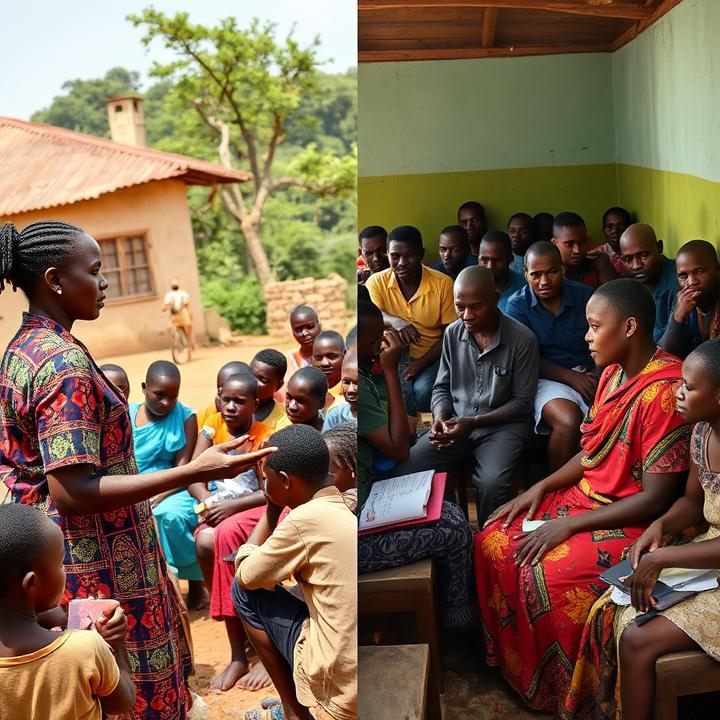
Challenges in Kenya’s Healthcare System: A Closer Look
Kenya’s healthcare system, while making strides in recent years, faces a myriad of challenges that impact its efficiency, accessibility, and quality. The country has made significant progress in terms of healthcare infrastructure and policies, but the system continues to struggle with issues ranging from inadequate funding to human resource shortages. In this blog, we explore the key challenges facing Kenya’s healthcare system and discuss the potential paths forward for addressing these issues.
1. Inadequate Funding
One of the primary challenges facing Kenya’s healthcare system is inadequate funding. While the government has made efforts to increase budgetary allocation to healthcare, it remains insufficient to meet the growing demands of the population. The World Health Organization (WHO) recommends that countries allocate at least 15% of their national budget to healthcare, but Kenya falls short of this target. This funding gap affects the availability of essential services, including medical equipment, drugs, and other resources needed to ensure proper care.
In addition, the cost of healthcare services continues to rise, making it difficult for many Kenyans to access even basic services. Despite the introduction of the National Hospital Insurance Fund (NHIF), many people, especially in rural areas, cannot afford to contribute or receive adequate benefits. This makes the healthcare system heavily dependent on out-of-pocket payments, which further exacerbates inequalities in access to care.
2. Human Resource Shortages
Kenya suffers from a severe shortage of healthcare professionals, including doctors, nurses, and specialists. This shortage is particularly pronounced in rural and remote areas, where medical personnel are reluctant to work due to poor working conditions and lack of incentives. According to the Kenya Medical Practitioners and Dentists Council (KMPDC), the ratio of doctors to the population is far below the global standard, with one doctor serving thousands of people in some regions.
The shortage of medical professionals is compounded by the uneven distribution of healthcare workers across the country. Most trained healthcare workers are concentrated in urban centers, leaving rural areas with limited access to quality healthcare services. This imbalance creates a situation where healthcare delivery is skewed, and the needs of rural communities are often neglected.
3. Limited Access to Healthcare in Rural Areas
Access to healthcare remains a significant challenge in rural Kenya. While urban areas have better healthcare facilities, rural regions continue to face long distances to reach healthcare centers, poor infrastructure, and limited availability of medical professionals. This lack of access to healthcare services contributes to high rates of preventable diseases, maternal and child mortality, and delays in seeking treatment.
To address this issue, the government and non-governmental organizations have made efforts to build more health centers and improve road infrastructure in rural areas. However, the demand for healthcare services in these areas still outpaces the available resources, leaving many people with little choice but to rely on traditional medicine or delay seeking medical attention until their conditions worsen.
4. Poor Quality of Healthcare Services
Even in the healthcare facilities that do exist, the quality of services is often subpar. Many hospitals and clinics are underfunded and lack the necessary medical equipment and supplies to provide effective care. Additionally, issues such as corruption and mismanagement of resources have plagued the healthcare sector, leading to wastage and inefficiency.
Patients often report poor treatment, long waiting times, and overcrowded facilities. These factors discourage people from seeking care at government hospitals, driving them to seek alternative treatment options or pay for private care, which is out of reach for most Kenyans.
5. Health Inequalities
Health inequalities remain a persistent challenge in Kenya. There are significant disparities in healthcare access and outcomes based on factors such as socioeconomic status, location, gender, and age. The poor and marginalized communities often bear the brunt of these inequalities, facing barriers to accessing healthcare services due to cost, lack of information, and cultural factors.
Maternal and child health outcomes are particularly concerning, with rural areas and informal settlements seeing higher rates of maternal mortality, malnutrition, and infant mortality. Addressing these inequalities requires a multi-faceted approach that includes improving access to quality care, increasing awareness about health issues, and empowering communities to take charge of their own health.
6. Emerging Health Threats
Kenya also faces the challenge of emerging health threats, including non-communicable diseases (NCDs) such as cancer, diabetes, and heart disease, which are becoming increasingly prevalent due to changes in lifestyle and dietary habits. At the same time, infectious diseases like malaria, HIV/AIDS, and tuberculosis continue to affect large portions of the population. The dual burden of infectious and non-communicable diseases presents a complex challenge for the healthcare system.
In response, Kenya has made efforts to strengthen its health infrastructure and create awareness about the prevention and management of NCDs. However, more resources need to be allocated to preventive care, early detection, and treatment options.
Conclusion
Kenya’s healthcare system faces significant challenges that hinder the delivery of quality services to its citizens. While efforts have been made to address these issues, such as increasing funding, improving infrastructure, and expanding insurance coverage, more needs to be done. To ensure that all Kenyans have access to the healthcare they need, the government must continue to prioritize healthcare reforms, increase funding, and address the critical shortages of healthcare workers. Only through these efforts can Kenya build a more equitable and effective healthcare system for the future.






